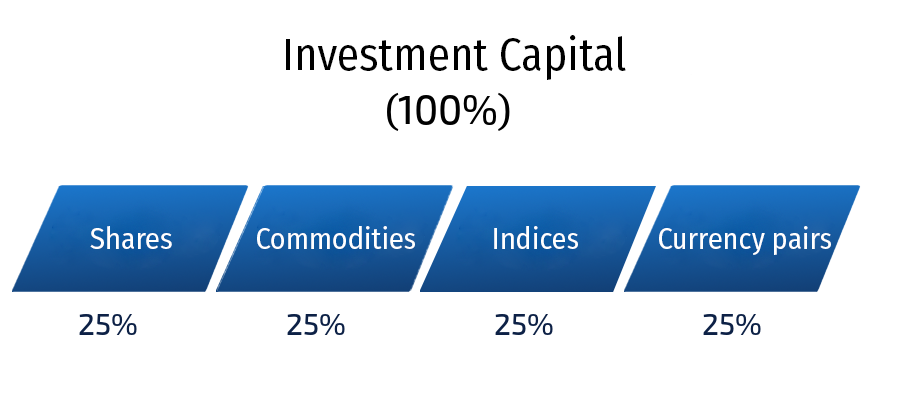

Bar graphs charts provide a visual presentation of categorical data. Categorical data is a grouping of data into discrete groups, such as months of the year, age group, shoe sizes, and animals. In a column bar chart, the categories appear along the horizontal axis; the height of the bar corresponds to the value of each category.
The number of adults who are between 6 and 10 servings per week is a total of 12. The number of children who are between 6 and 10 servings per week is a total of 25. In a firm of 500 employees, the percentage of monthly salary saved by each employee is given in the following table.
Class 12
Bar graphs can be easily manipulated to display false information because they are easy to represent. This type of bar graph is also known as a composite bar graph. It is because it divides the total value into different parts. A graph is a pictorial representation of any data used to analyze, calculate, and define numerous outputs. A Probability Histogram shows a pictorial representation of a discrete probability distribution. It consists of a rectangle centered on every value of x, and the area of each rectangle is proportional to the probability of the corresponding value.
Categorical information is represented by the bars in a bar graph. In the case of a bar graph, it is quite common to rearrange the blocks, from highest to lowest. But with histogram, this cannot be done, as they are shown in the sequence of classes. The bar graph is used to compare the items between different groups over time. These are used to measure the changes over a period of time. When the changes are larger, a bar graph is the best option to represent the data.
- Thus, with the help of data grouping, we can check the count of data points in each data range, and the pictorial representation is easier to understand and analyze.
- Bar graphs are useful for comparing the relative sizes of each category, and the bars can be color-coded or labeled to make them easier to read.
- A typical bar graph shows numeric variables arranged at equal class intervals.
- Bar graphs charts provide a visual presentation of categorical data.
- In summary, the two main differences between a bar graph and a histogram are the type of data they represent and the way the data is displayed.
The histography is a form of graphical representation of data in which the group of data points are organized into user-specified ranges. The biggest difference is that in the case of a histogram, the data ranges are used to group data points. This means that the histogram is mostly used for frequency distribution representation of data. The first main difference between a bar graph and a histogram is the type of data they represent. A bar graph is used to display discrete or categorical data, where the data is divided into distinct categories or groups.
Advantages of bar chart are as follows
The frequency distribution tables can be easily represented using bar charts which simplify the calculations and understanding of data. A bar chart or bar graph is a chart with rectangular bars with lengths proportional to the values that they represent. A vertical bar chart is sometimes called a column bar chart. The choice between a bar graph and a histogram depends on the type of data being displayed. Bar graphs are best suited for displaying discrete or categorical data, while histograms are best suited for displaying continuous data and the distribution of that data.

In the case of sales and marketing, it is used to find the most useful pricing plans. The marketing campaigns are streamlined as per the most useful pricing plans. Draw the bars of equal width for the heights marks in the above step along the x-axis. It is possible to combine a bar graph and a histogram in the same chart, but it is not common. This is because they represent different types of data and are best suited for different purposes. Bar Graph Vs Histogram are two types of charts that are used to visually represent data.
In bar graph data is represented in only vertical bars. A bar graph is used to show comparison amongst different categories and may consist of two or more parallel, vertical or horizontal bars. The fundamental difference between histogram and bar graph is the aspect of visual representation. It can be defined as a set of rectangles with bases along with the intervals between class boundaries and with areas proportional to frequencies in the corresponding classes. In such representations, all the rectangles are adjacent since the base covers the intervals between class boundaries.
Bar Graph vs Histogram
With bar charts, the labels on the X-axis are categorical in nature; with histograms, the labels are quantitative in nature. The graph is the graphical representation of data that uses bars to distinguish various database types. The histogram is drawn in such a way that there is no gap between the bars. As opposed to the bar graph, items are considered as individual entities. A bar graph is a comparatively easy chart to represent out of various other graphical representations.
NASA Cost Estimating Handbook – NASA
NASA Cost Estimating Handbook.
Posted: Wed, 09 Dec 2020 08:00:00 GMT [source]
Histograms are best suited for displaying continuous data, such as height, weight, time, or temperature. Histograms display the distribution of the data within intervals, allowing patterns or trends to be identified. In simple terms, a grouped bar graph represents different sets of comparable data in a bar graph. This type of bar graph can be expressed both by vertical and horizontal charts. A noticeable feature of any bar graph is the length of its bar that represents the given data. It means if the length of a single bar is more than the length of other bars, then it denotes a greater value.
The frequency distribution tables can be represented using bar charts which simplify the calculations and understanding of data. In summary, the two main differences between a bar graph and a histogram are the type of data they represent and the way the data is displayed. Understanding these differences can help you choose the best type of graph for your data and create more informative and effective visual representations. Bar Graph Histogram A bar graph is used to show comparison amongst different categories and may consist of two or more parallel, vertical or horizontal bars. A histogram is a continuous graph and has adjacent bars over the intervals, in simple words it is a series of bars over the x axis.
What is a bar graph, and how to make a bar graph?
These categories are best suited to be represented by a bar graph. A bar graph sometimes does not close the cause, patterns, effects, and other aspects of statistical data. Bar graphs have a distinct domain of divisions that are done by scaling all the data to fit in a graph.
The pictorial representation of data is more intuitive to the human mind and easier to grasp. The different types of bar graphs are vertical bar graphs, grouped bar graphs, horizontal bar graphs, and stacked bar graphs. In contrast, a histogram typically has adjacent bars, with no spacing between them, to represent the continuous nature of the data. The bars in a histogram represent the frequency or relative frequency of data within each interval, with the height of each bar indicating the quantity of data within that interval.
A communal catalogue reveals Earth’s multiscale microbial diversity – Nature.com
A communal catalogue reveals Earth’s multiscale microbial diversity.
Posted: Wed, 01 Nov 2017 07:00:00 GMT [source]
A bar graph uses rectangular bars to represent its data, whereas a line graph uses lines to represent a chart. Apart from this, the data on a bar graph can also be used to compare different sets of data. Bar graphs can represent frequency distribution and simplify the calculations for them.
Also known as the clustered bar graph, the grouped bar graph is used to show the precise value of more than one entity, usually among the same category. In this particular type of bar graph, the total number of the given data is combined into a single bar graph. It is easy to compare data differences with other groups with the help of a bar graph. Consider weighing a group of pebbles found on a beach. Each pebble if measured accurately enough will have a different weight compared to every other pebble. Note that even for 7 pebbles, a bar chart will not be able to show much information.
Since this question is about the adults, we do not need to consider the bars for children. All we need to do is see which bar is highest for the adults. Mark off these heights or lengths parallel to the y-axis from the points taken in Step 2. The histogram is made on the basis of adjusted frequencies and not the frequencies given originally. Differentiate between percentage subdivided bar diagram and subdivided bar diagram. Scale the horizontal X-axis according to the requirement.
Yes, a histogram is one of the most used charts, and you can plot the frequency distribution on the graph. The pictorial representation of data in a histogram can help you understand the peak frequency and the plot of data in the range. The second main difference between a bar graph and a histogram is the way the data is displayed. In a bar graph, each bar is spaced apart to represent each category, and the bars can be oriented either vertically or horizontally.
Mass spectrometry imaging to explore molecular heterogeneity in … – pnas.org
Mass spectrometry imaging to explore molecular heterogeneity in ….
Posted: Mon, 11 Jul 2022 07:00:00 GMT [source]
The data in a bar graph is represented by rectangular bars that are spaced apart, with each bar representing a separate category or group. In contrast, the data in a histogram is represented by adjacent bars that represent the frequency or relative frequency of data within each interval. A typical bar graph shows numeric variables arranged at equal class intervals. These graphs are represented with the help of an x-axis and a y-axis. Each part of a bar graph displays frequencies of the different values of a variable or other distinct values.

The graphical representation depends on the data itself. If the length of the bar graph is more, then the values are greater than any given data. One who is willing to learn more about the bar graph can refer to the following sections. On this page, we are providing the definition of a bar graph or column graph, solved example questions, and types of the bar graph. Bar graphs typically have labeled axes, with one axis showing the categories or groups and the other axis showing the quantity or frequency of the data.
- The pictorial representation of data is more intuitive to the human mind and easier to grasp.
- The bars don’t touch each other, there are spaces between them.
- Mark the points at equal intervals along the x-axis, also mention the names of data items whose values are plotted.
- While there are many methods to represent a given data set, bar graphs are the most common ones.
- It can be used to show data about the population, purchases, or anything else that can be measured on a scale.
A what differentiates histogram from a bar chart graph is a chart that uses either horizontal or vertical bars to show comparisons among categories. One axis of the chart shows the specific categories being compared, and the other axis represents a discrete value. Some bar graphs present bars clustered in groups of more than one , and others show the bars divided into subparts to show cumulative effect . In summary, histograms are best suited for continuous data and showing distributions, while bar graphs are best suited for categorical data and comparing values. If the bars in a bar graph are represented vertically, it is known as a vertical bar graph.